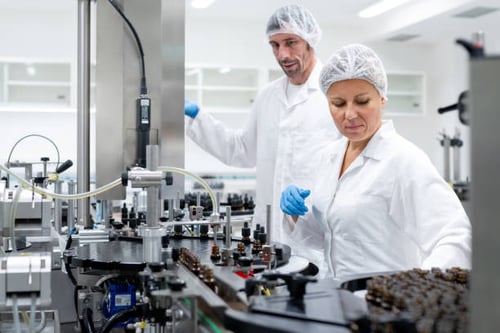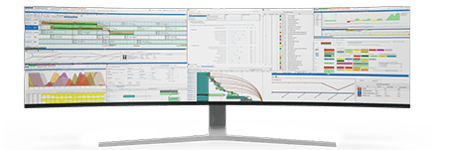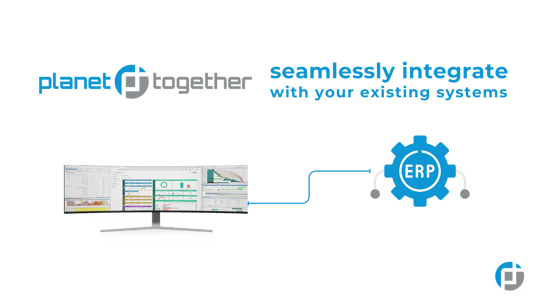
Optimizing Product Life Cycles in Medical Manufacturing: A Strategic Edge with APS and ERP Integration
The Criticality of Product Life Cycle Management in Medical Manufacturing
In medical manufacturing, the product life cycle (PLC) is not just a commercial concept—it’s a tightly regulated, highly scrutinized journey that spans product development, clinical validation, manufacturing scale-up, and market withdrawal. For Production Planners, managing this life cycle efficiently is crucial to ensuring both regulatory compliance and competitive differentiation.
In an industry where every minute and milligram matters, enhancing how products are planned, produced, and retired can unlock new levels of operational excellence. Advanced Planning and Scheduling (APS) systems like PlanetTogether, when integrated with enterprise systems such as SAP, Oracle, Microsoft Dynamics, Kinaxis, or Aveva, offer a strategic pathway to mastering the intricacies of the product life cycle in a medical manufacturing environment.
The Challenge: Complexity at Every Stage
Medical products—from surgical implants to diagnostic equipment and single-use instruments—undergo complex life cycles. These are characterized by:
Rigid compliance and traceability requirements
Multi-stage, multi-site production chains
Frequent design updates and regulatory reviews
Tight delivery timelines for life-saving applications
Demand fluctuations based on healthcare policy and public health crises
Production Planners are at the center of this storm. They need tools that do more than generate schedules—they need decision intelligence platforms that enable dynamic adaptation across the product life cycle.


APS as a Life Cycle Accelerator
PlanetTogether APS excels by giving Production Planners a real-time, interactive, and constraint-aware environment to visualize and manage product flows. By integrating with ERP platforms like SAP, Oracle, Microsoft, Kinaxis, or Aveva, it enables a seamless exchange of master data, inventory levels, and production orders.
Here’s how this synergy benefits each life cycle phase:
Introduction Phase: Managing Ramp-Up and Market Entry
When a new product is introduced, planners must quickly move from pilot runs to scaled manufacturing without sacrificing compliance or quality.
How PlanetTogether + ERP Integration Helps:
Automatically pulls bill of materials (BOMs), routing data, and change orders from ERP into APS.
Enables simulation of capacity scenarios to find optimal launch plans.
Aligns component availability with testing and validation timelines.
Tracks and adjusts for long lead-time items common in medical components.
Result: Faster time-to-market without misalignment between R&D, production, and regulatory gates.
Growth Phase: Scaling Responsively and Safely
As demand increases, planners need to scale operations while maintaining batch traceability and minimizing quality risks.
How Integration Adds Value:
Real-time visibility into capacity constraints across facilities using Kinaxis or Aveva for manufacturing visibility.
PlanetTogether dynamically reprioritizes production sequences based on demand signals from Oracle or SAP.
Coordinated material flow to avoid bottlenecks in sterilization, assembly, or packaging.
Result: Higher throughput with lower rework and waste, while keeping GMP and ISO compliance intact.
Maturity Phase: Maximizing Efficiency and Profitability
During maturity, process efficiency and margin optimization are key. Production Planners are tasked with minimizing costs while meeting steady demand.
Key Tools and Strategies:
PlanetTogether’s drag-and-drop scheduling lets planners quickly adapt to unplanned maintenance or resource constraints.
Integration with Microsoft Dynamics or SAP allows for proactive planning using actual inventory and labor data.
Lean manufacturing strategies become achievable with APS-driven takt-time balancing and synchronized work cells.
Result: Higher operational efficiency, stabilized supply chains, and predictable output for steady market needs.
Decline Phase: Strategic Sunset Planning
When products approach obsolescence, planners must manage end-of-life with minimal inventory risk and resource waste.
Capabilities Unlocked Through Integration:
PlanetTogether helps simulate best-fit production runs to fulfill final orders without surplus.
ERP systems alert on raw material expiration or shelf-life constraints for biologics or sterile items.
Synchronized planning allows multi-location coordination for centralized winding down of operations.
Result: Clean product sunset with minimal excess inventory and reduced financial write-offs.
Real-World Benefits: Use Case Snapshots
Case Study: A Medical Device Manufacturer Using PlanetTogether + SAP
A leading orthopedics manufacturer integrated PlanetTogether with SAP to better manage their complex mix of high-value, low-volume SKUs. By aligning real-time scheduling with SAP’s production order system, they reduced planning cycle times by 40% and cut excess inventory by $2.3 million within a year.
Case Study: A Disposable Medical Product Manufacturer + Microsoft Dynamics
For a company producing single-use diagnostic kits, integrating PlanetTogether with Microsoft Dynamics allowed them to anticipate seasonal demand swings. The APS enabled predictive planning models that improved on-time delivery from 84% to 97%, even during peak flu season.
From Tactical Planning to Strategic Life Cycle Management
When Production Planners are equipped with integrated planning systems, their role evolves from reactive scheduler to strategic orchestrator. They can:
Proactively manage product transitions with minimal disruption.
Ensure full traceability from batch origin to field delivery.
Enable real-time collaboration between QA, procurement, and maintenance teams.
Visualize the complete product journey and align production schedules with corporate lifecycle strategies.

The Integration Advantage: Why PlanetTogether with ERP is Essential
A standalone APS can optimize a schedule. But without real-time integration into ERP systems, those optimizations exist in a vacuum. By connecting PlanetTogether with:
SAP: Leverage end-to-end visibility of production orders, quality holds, and resource availability.
Oracle: Synchronize planning with financials, demand forecasts, and procurement workflows.
Microsoft Dynamics: Connect shop floor execution with corporate performance metrics.
Kinaxis: Use upstream planning signals to drive real-time schedule recalibration.
Aveva: Link process simulation data directly into production schedules.
Production Planners gain a comprehensive view that allows for confident, compliant, and cost-effective product life cycle execution.
Planning the Future of Every Product
The medical manufacturing industry operates under relentless pressure—from regulatory scrutiny and innovation demands to public health urgencies and cost containment. The ability to manage product life cycles with agility, traceability, and foresight is a non-negotiable competency.
For Production Planners, integrated tools like PlanetTogether APS—especially when connected to platforms like SAP, Oracle, Microsoft Dynamics, Kinaxis, or Aveva—are no longer optional. They are essential digital allies in shaping the future of medical manufacturing.
Whether introducing the next groundbreaking diagnostic tool or responsibly phasing out an aging device, the success of your operation depends on planning precision across the product life cycle—and integration is the cornerstone of that success.
Are you ready to take your manufacturing operations to the next level? Contact us today to learn more about how PlanetTogether can help you achieve your goals and drive success in your industry.


